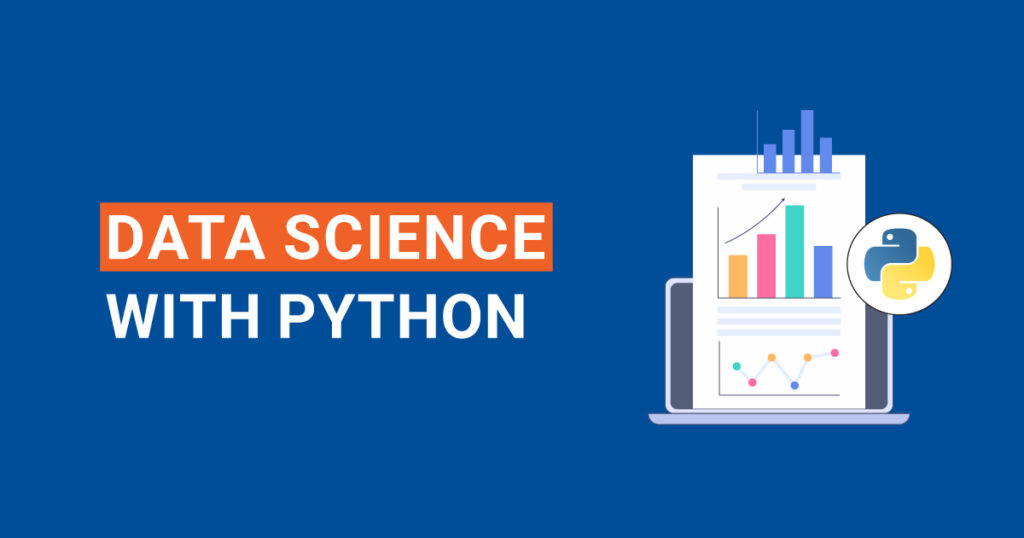The need for more effective and efficient data storage increased significantly as the globe entered the era of big data in recent decades. Businesses utilizing big data put a lot of effort into developing frameworks that can store a lot of data. Subsequently, the development of frameworks like Hadoop provided assistance in storing massive amounts of data.
The resolution of the storage issue led to a shift in focus towards the processing of the already stored data. Data science has emerged as the method of the future for handling and evaluating data in this situation. Data science is becoming a crucial component of every industry dealing with massive amounts of data. Companies now employ data scientists and other experts to transform the data. Let’s now dig deep into data science and how data science with Python is beneficial.

What is Data Science?
Let us begin our learning by the first understanding of data science. It is all about finding and exploring data in the real world and using that knowledge to solve business problems. Some examples of data science are:
Customer Prediction — a System can be trained based on customer behavior patterns to predict the likelihood of a customer buying a product.
Service Planning — Restaurants can predict how many customers will visit on the weekend and plan their food inventory to handle the demand
Now that you are aware of what it is, let’s first discuss Python before delving deeply into the subject of data science with Python.
Why Python?
We require a programming language or tool, such as Python, for data science. Although there are other data science tools, such as SAS and R, this post will concentrate on Python and how it may help with data science.
Python has recently gained a lot of popularity as a programming language. Its usage in data science, the Internet of Things, artificial intelligence, and other technologies has increased its appeal.
There are several reasons why Python is a popular programming language for data science. Firstly, it has expensive mathematical or statistical features. Additionally, it is utilized specifically as a programming language for data science. Data scientists all around the world use Python extensively, and one of the key reasons is its expensive mathematical or statistical features, and its use as a programming language for data science. If you keep an eye on the patterns over the last few years, you’ll see that Python has become the programming language of choice, particularly for data science. Python is one of the most popular programming languages for data science for a number of additional reasons, including:
Python is comparatively quicker than other programming languages in terms of speed. Availability — There are numerous packages created by other users that are readily available and can be used.
Design objective: Python’s syntax responsibilities are simple to comprehend and intuitive, making it easier to create applications with intelligible code.
Python Data Analysis Libraries
It is a straightforward programming language to learn, and it supports certain fundamental operations like adding and printing statements. However, you must import particular libraries if you wish to undertake data analysis. Several instances include: Pandas is a tool for working with structured data. You may generate n-dimensional arrays with the aid of the robust library NumPy. SciPy offers scientific features like Fourier analysis and linear algebra. People mostly use Matplotlib for visualization, and they use Scikit-learn for all machine learning operations.





